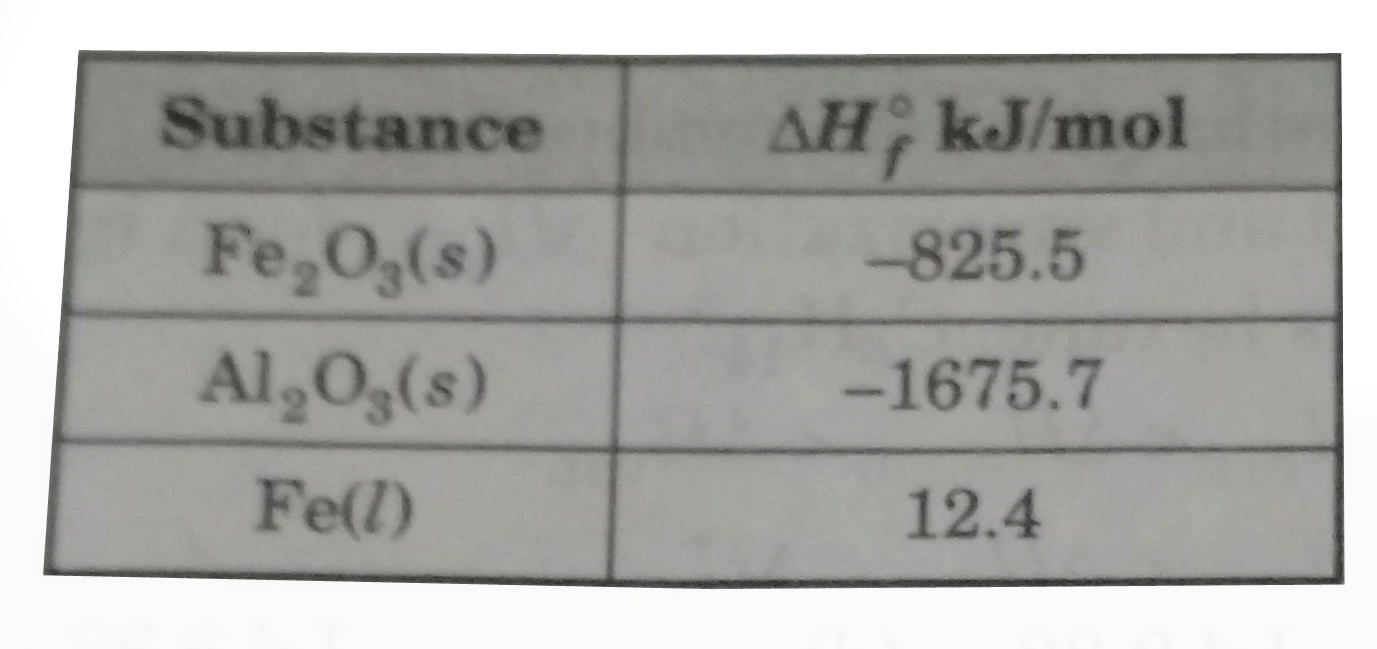Fe2O3(s) may be converted to Fe by the reaction
Fe2O3(s)+3H2(g)⇔2Fe(s)+3H2O(g) for which Kc=8at temp . 720∘c.
What percentage of the H2 ramains unreacted after the reaction hascome to equilibrium ?Solution in Telugu
~22%
~34%
~66%
~78%
The correct Answer is:b
Step by step video & image solution for Fe_(2)O_(3)(s) may be converted to Fe by the reaction Fe_(2)O_(3)(s)+3H_(2)(g)hArr2Fe(s)+3H_(2)O(g) for which K_(c)=8 at temp . 720^(@)c. What percentage of the H_(2) ramains unreacted after the reaction hascome to equilibrium ? by Chemistry experts to help you in doubts & scoring excellent marks in Class 11 exams.
Updated on:21/07/2023Topper's Solved these Questions
- CHEMICAL EQUILIBRIUMBOOK - NARENDRA AWASTHICHAPTER - CHEMICAL EQUILIBRIUMEXERCISE - Level 1 (Q.93 To Q.122)
1 Videos
- CHEMICAL EQUILIBRIUMBOOK - NARENDRA AWASTHICHAPTER - CHEMICAL EQUILIBRIUMEXERCISE - Level 2
1 Videos
- ATOMIC STUCTUREBOOK - NARENDRA AWASTHICHAPTER - ATOMIC STUCTUREEXERCISE - level 2
1 Videos
- DILUTE SOLUTIONBOOK - NARENDRA AWASTHICHAPTER - DILUTE SOLUTIONEXERCISE - Level 3 - Match The Column
1 Videos
Similar Questions
An equilibrium mixture at 700 K of 0.05M N2(g)and0.2MNH3(g) is present in a container .Now if this equilibrium is disturbed by adding N∘ (g) so that its concentration becomes 0.15M just after addition then which of the following graph represents the above situation more appropriately:
View SolutionCalculate ΔrG for the reaction at 27∘C
H2(g)+2Ag+(aq)⇔2Ag(s)+2H+(aq)
Given : PH2=0.5 bar, [Ag+]=10−5M,
[H+]=10−3M,ΔrG∘[Ag+(aq)]=77.1kJ/mol
View SolutionA small particle of mass m moves in such a way that the potential energy U = ar2 where a is a constant and r is the distance of the particle from the origin. Assuming Bohr's model of quantization of angular momentum and circular orbits, find the radius of nth allowed orbit.
View SolutionColumn -I and Column -II contain four entries each. Entries of column-I are to be matched with some entries of column-II. One or more than one entries of column-I may have the matching with the same entries of column-II.

View SolutionCalculate ΔH at 85∘C for the reaction:
Fe2O3(s)+3H2(g)→2Fe(s)+3H2O(l)
The data: ΔHΘ298=−33.0kJmol−1 and SubstanceFe2O3(s)Fe(s)H2O(l)H2(g)C∘P(JK−1mol)103.025.075.028.0
View SolutionCalculate standard entropy change in the reaction Fe_(2)O_(3)(s)+3H_(2)(g) rarr 2Fe(s)+3H_(2)O(l) Given : S_(m_(0))(Fe_(2)O_(3).S)=87.4,S_(m)^(@)(Fe,S)=27.3 S_(m)^(@)(H_(2),g)=130.7,S_(m)^(@)(H_(2)O,l)=69.9JK^(-1)mol^(-1)
View SolutionDetermine the enthalpy change for the reaction of 5.00 g Fe2O3with aluminium metal according to the equation :
Fe2O3(s)+2Al(s)→Al2O3(s)Fe(l)

View SolutionFe2O3(s) may be converted to Fe by the reaction
Fe2O3(s)+3H2(g)⇔2Fe(s)+3H2O(g) for which Kc=8at temp . 720∘c.
What percentage of the H2 ramains unreacted after the reaction hascome to equilibrium ?
View SolutionThe reactions which is not involved in the extraction of iron from the mixture from the mixture of its ores:
(Fe2O3+Fe2O3.3H2O+FeO3+Fe3O4)
View SolutionBalance the following chemical equations and identify the type of reaction involved :
(a) Na(s)+S(s)→Na2S(s)
(b) H2S(g)+O2(g)→S(s)+H2O(l)
(c) Fe2O3(s)+CO(g)→Fe(s)+CO2(g)
(d) FeSO4(s)→Fe2O3(s)+SO2(g)+SO3(g)
View SolutionCalculate the standard free energy change for the reaction : Fe_(2)O_(3)(s) + 4H_(2)(g) rarr2Fe(s) + 3H_(2)O(l) Given that the standard free energies of formation of Fe_(2)O_(3) and H_(2)O are - 741.0 and -237.2kJ mol^(-1) respectively.
View SolutionWrite the expression for equilibrium constant Kp for the reaction,
3Fe(s)+4H2O(g)⇔Fe3O4(s)+4H2(g).
View SolutionWrite the expression for equilibrium constant K_(p) for the reaction, 3 Fe (s) + 4 H_(2)O (g) hArr Fe_(3)O_(4) (s) + 4 H_(2)(g).
View SolutionConsider the following reactions. DeltaH^(@) values of the reactions hve been given as -x, -y and z kJ. Fe_(3)O_(4)(s) to 3Fe(s) + 2O_(2)(g), DeltaH^(@) = z kJ 2Fe(s) + O_(2)(g) to 2FeO(s), DeltaH^(@) =-x kJ 4Fe(s) + 3O_(2)(g) to 2Fe_(2)O_(3)(s), DeltaH^(@) =-y kJ Heat of reaction for the reaction, FeO(s) + Fe_(2)O_(3)(s) to Fe_(3)O_(4)(s) is :
View SolutionThe heat of formation of Fe2O3 is −824.2 kJ mol−1.ΔH for the reaction 2Fe2O3(s)→4Fe(s)+3O2(g) is :
View SolutionFor the equilibrium reaction, 3Fe_((s)) + 4H_(2) O_((g)) hArr Fe_(3)O_(4(s)) + 4 H_(2(g)) the relation between K_(p) and K_(c) is
View Solution
